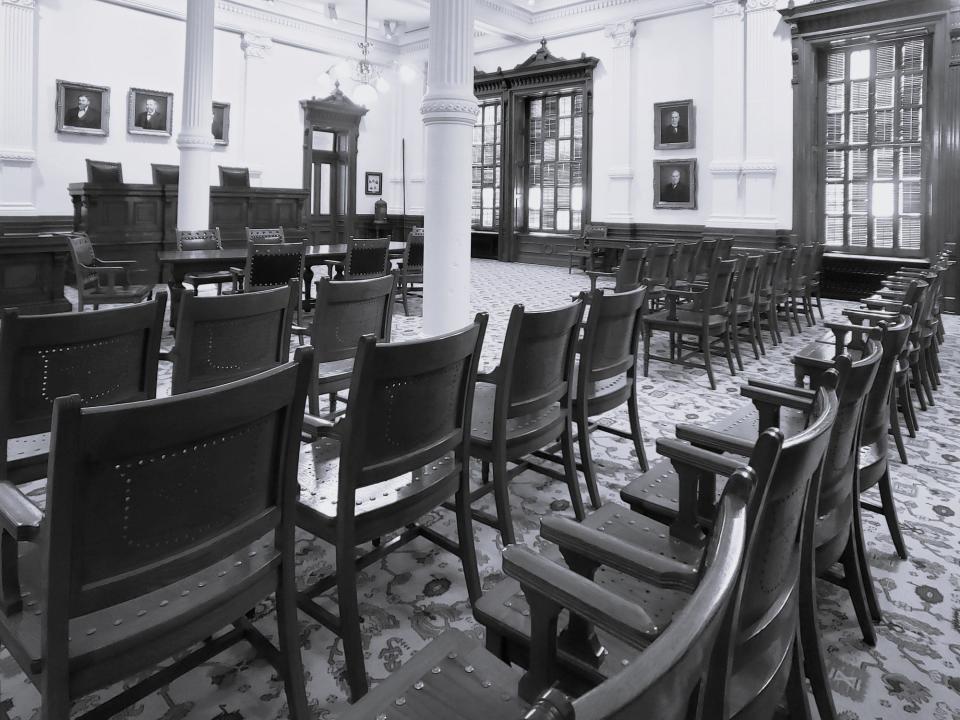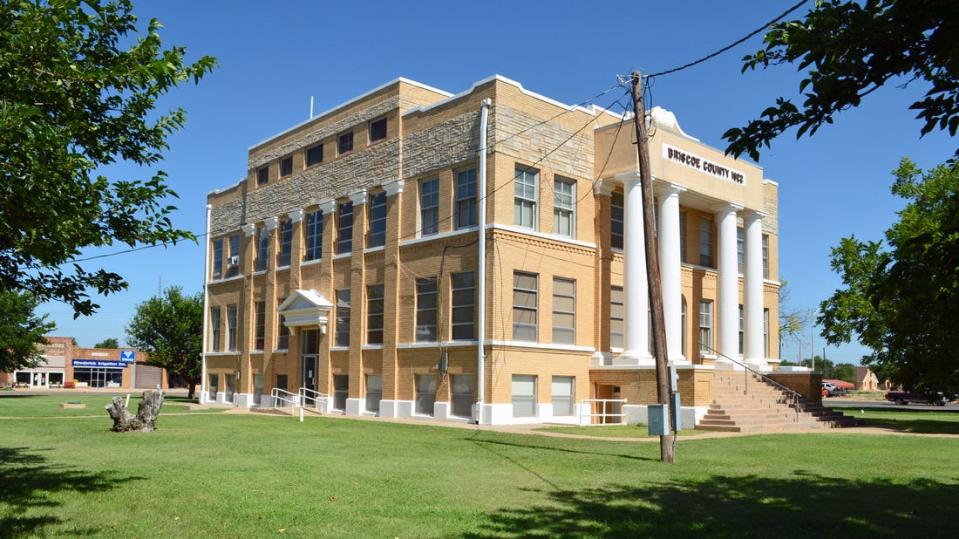Caprock Chronicles: A racially charged trial in Lubbock, part three: The man has a name
Editor’s Note: Jack Becker is the editor of Caprock Chronicles and is a Librarian Emeritus from Texas Tech University. He can be reached at jack.becker@ttu.edu. Today’s article about the 1947 Lubbock trial of George Holland is the last of a three-part series by frequent contributor Chuck Lanehart, Lubbock attorney and award-winning history writer.
The lawyers for “the negro” stood defiantly before Judge Dan Blair in Lubbock’s stately 1916 courthouse. Their complaints about George Holland’s hasty, unfair, racist trial had been ignored, and their client faced death in the electric chair.
Attorney A.C. Cooke declared Holland’s case would be appealed “all the way to the U.S. Supreme Court, if necessary.” Cooke, a real estate attorney with little criminal experience, was probably not taken very seriously by his adversaries, Judge Blair and DA Lloyd Croslin. Nevertheless, along with his equally inexperienced law partner Bryan Dillard and NAACP lawyer W.J. Durham of Dallas, Cooke vowed to save his client’s life.

The first step in the appeals process would be to file “bills of exception,” formal written documents objecting to the Judge’s decisions or rulings excluding relevant evidence at trial. Texas law required the documents to be filed within 30 days of the denial of the defendant’s motion for new trial. But Cooke, responsible for preparing and filing the documents, fell ill and was hospitalized. He missed the deadline.
Judge Blair was not sympathetic to the lawyer’s untimely illness. When the defense team filed hundreds of pages of bills of exception well past the deadline, the Judge refused to review the documents, which complained of vagueness in the indictment, the Court’s rush to judgment, lack of Black men on the jury venire, and insufficiency of the prosecution’s circumstantial evidence.
Judge Blair wrote, "Bill of Exception No. 1 was for the first time presented to the Court for approval or disapproval . . . fifty-five days after date of the Order overruling Motion for New Trial [the deadline], . . . and it further appearing that the Court has no power under the law to order said Bill filed.

"It is therefore the order of this Court that this Bill of Exception No. 1 be disallowed for the reason heretofore stated.”
The Court’s ruling — devastating to the defense — was a pivotal event in the life of “the negro.”
As Holland sat on Death Row in Huntsville, Cooke and Dillard traveled to Austin to argue his case before the Texas Court of Criminal Appeals. Their chances of winning in the State’s highest criminal court seemed unlikely. (The Texas Supreme Court hears only civil matters.)
“Crosby Negro’s Appeal Heard,” the Lubbock Avalanche reported, once again burying Holland’s name in the narrative.
The Holland appellate brief presented only two arguments. The first argument was the State’s evidence was insufficient to support a conviction. The only hard evidence of Holland’s guilt was the testimony of a few residents of Ralls’ “Flats” neighborhood. The witness Lewis Flowers saw Holland come from the direction the witness heard gunshots and saw the flash of gunshots. He found the lifeless body of Sheriff J.J. Pierce in the same area. Other witnesses testified they heard gunshots in the vicinity, saw Holland get into his car, and some saw a “shiny object” in Holland’s hand.

The evidence seemed slim and circumstantial, but unfortunately, Texas law was clear: circumstantial evidence is sufficient to convict. The Court of Criminal Appeals summarily rejected the defense argument in three paragraphs of their written opinion.
Next, the Court considered the second — and final — argument in Holland’s appeal: “Was appellant unlawfully deprived of his bills of exceptions?” Holland’s lawyers knew they were asking the Court to reverse their client’s death sentence on a legal “technicality.”
But it worked.
The Court explored the finer points of the process of filing bills of exception. It concluded that had Judge Blair simply accepted the documents for filing with the Court — whether the Judge agreed or disagreed with the objections and the missed deadline — the judgment of death may have been affirmed. Since the documents were not filed by the trial court, the Court of Criminal Appeals could not consider the substance of the bills. Holland’s conviction was reversed, and he was granted a new trial.
Predictably, newspaper headlines did not name Holland in coverage of the momentous decision. The Lubbock Avalanche reported, “Crosby Negro To Get New Trial.”
Venue was shifted to the tiny village of Silverton, population 850—less than one per cent Black—county seat of Briscoe County. Holland’s prospects for a fair trial again seemed slim.
But when the case was called for trial on Sept. 19, 1949, a deal was struck. The Crosbyton Review finally mentioned the man’s name in its Sept. 22 headline: “Silverton Jury Gives Holland Life Sentence on State Recommendation.” The plea bargain meant Holland would dodge the death penalty, and he waived his right to appeal.
George Holland was sent to prison and was paroled in 1964, having served only 15 years of his life sentence. He was never heard from again.
More than a decade would pass before Texas newspapers ceased using “negro” and “Mexican” to identify persons of color accused of crimes.
This article originally appeared on Lubbock Avalanche-Journal: Caprock Chronicles: A racially charged trial in Lubbock, part three: The man has a name

